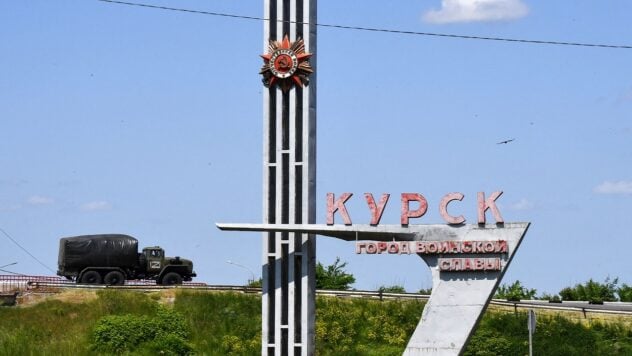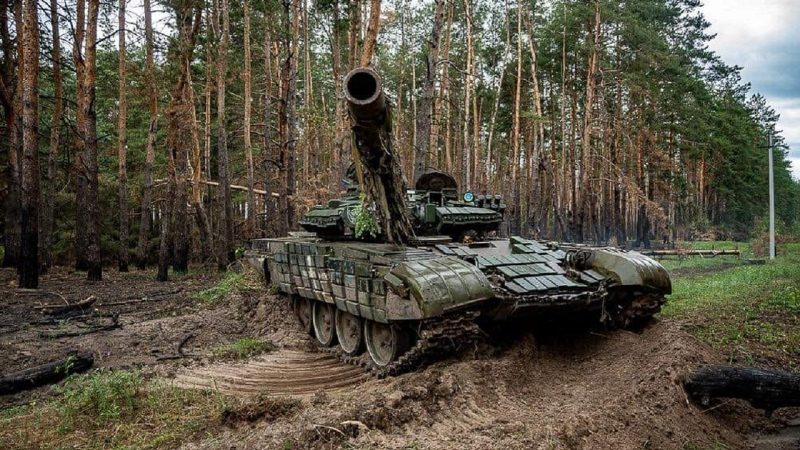
Ukraine has several options for the development of events in the Kursk operation. Among them are advancing forward, consolidating the already controlled positions and retreating back behind the state border of Ukraine.
Retired Major General of the Australian Army, observer of the Russian-Ukrainian war Mick Ryan, spoke about this in his blog, who in his analysis took into account such factors as the degree of enemy resistance, availability of resources and logistics, response.
Kursk operation: tactics of the advance of the Armed Forces of Ukraine
According to him, since the start of the Ukrainian operation in the Kursk region, the Ukrainian Armed Forces have likely allocated several brigades, or at least elements of several brigades, to form what appears to be an Operational Maneuver Group.
Now watching
— The Operational Maneuver Group concept has its roots in the German Panzergruppen of World War II and the Soviet mobile groups. The concept matured during the Cold War as Operational Maneuver Groups. These organizations were designed to bypass NATO tactical nuclear strikes by concentrating combined arms forces on the front lines and — hopefully — achieving surprise for NATO forces, — it reminds me of it.
In Mick Ryan's assessment, in its mature conceptual state, the Operational Manoeuvre Group was intended to be a “flexible in size and organisation, combined arms force designed to operate at long range from friendly conventional forces”.
— This appears to be exactly what this Ukrainian unit is doing. Therefore, in the remainder of this article I will use the term “Operational Manoeuvre Group Kursk” (OMG-K) to refer to the Ukrainian forces engaged in the ongoing Battle of Kursk, — he explains.
Ryan's analysis focuses on examining the options currently available to Ukraine as OMG-K operations in the Kursk region enter their second week, as well as the considerations and risks associated with each option.

General Staff
Battle of Kursk status: possible options
According to a retired Australian army general, the Ukrainian Kursk operation “was to be planned as a multi-phase operation, including preliminary preparatory operations”. These preparatory operations would include intelligence gathering, force preparation, deception, operational security, logistics and other aspects necessary to prepare the Ukrainian OMG-K for combat.
— Other phases of the operation were also planned, namely the “invasion” and “breakthrough” battles, ongoing exploitation and a consolidation phase. Each of these phases would involve different forces and support assets, — he writes.
According to the military observer, the Ukrainian Armed Forces have already passed the first phase, “invasion” and “breakthrough”, and are now in the “exploitation” phase.
— Many operations also typically have a “exploitation limit”, which is determined by factors such as terrain, logistics, the enemy's position and reaction, and the operational and strategic goals of the operation. As the Russians slowly but surely begin to redeploy forces to plug the gap in their border and try to push the Ukrainians back, it is worth considering the options the Ukrainians may have once they reach the exploitation limit, — he thinks.
In his opinion, Ukraine has three options regarding its further actions in the Kursk region, and each of them will have “small side plans, as well as opportunities and risks”.
Option 1. Consolidation and waiting for negotiations
Mick Ryan believes that for the Ukrainian OMG-K this option is to consolidate its position in the territory that the Ukrainian Armed Forces already control, and then defend it until negotiations take place in one form or another.
— This is the riskiest option, since the maps show that the Ukrainian positions have many small salients that could easily be cut off and destroyed even by a semi-combat-capable Russian commander, he writes.
He points to unconfirmed reports that the Ukrainians are already digging in, although he notes that one should not jump to conclusions about this.
— The doctrine of most Western armies provides for soldiers to dig trenches during a halt lasting longer than six hours at any point. At this stage, digging trenches by soldiers does not indicate intentions for a long-term occupation, — the expert believes.
At the same time, this option, when the OMG-K reaches the limit of its operation, will require the involvement of a huge number of combat and support troops to defend the captured Russian territory. This will require significant engineering efforts to create minefields and other obstacles, trenches and deep bunkers, as well as storage areas for logistics. Air defense, electronic warfare, air support, medical and logistic support will require a special task force, the retired general writes.
— This option is high-risk, as maintaining combat units in such a large salient would be very difficult, as would providing electronic warfare and air defense for combat and support units there. Ukraine probably does not have the forces to occupy such a large territory for a long time, — he writes.
There is a high probability of “losing a large number of troops” in this scenario, which also makes it a strategic and political liability, in his opinion.
— This option, if it fails, would also lose the very positive strategic message that was generated by Ukraine's surprise attack on Russia, — he writes.
The purpose of this option, Mick Ryan says, is to continue to pose significant risks to Russian sovereignty and critical assets, and to divert Russian forces from Ukraine. It could also give Ukraine some leverage if it is forced to negotiate in the near future.
Option 2. Partial withdrawal of the Ukrainian Armed Forces
The second option, the retired Australian general writes, is for Ukrainian troops to partially withdraw from the captured territory, returning to more defensible territory.
— This is a medium-risk option, but lower risk than Option 1. It would involve withdrawing Ukrainian forces to a pre-defined area that requires fewer troops to defend and can be more effectively supported by fire, logistics and other functions, he writes.
According to the ex-military, this option would also provide the opportunity to redistribute more troops after the operation to other tasks, either for defense in Donbas or for further cross-border attacks on Russia, if such an opportunity arises.
As the expert points out, Option 2 “allows Ukraine to maximize the political and strategic benefits from the strategic shock caused” operation in Kursk, while simultaneously reducing the risk of losing its combat units.
The goal of this option, Mick Ryan believes, is to humiliate Vladimir Putin and continue to create a risk for Russian sovereignty, as well as continue to distract Russian troops from Ukraine and provide official Kyiv with certain leverage if it is forced to negotiate in the near future.
The risks associated with this opportunity may be worth the potential benefits, says the retired general.
Option 3. Complete care of the state border of Ukraine
The Australian military calls the third option a complete withdrawal of Ukrainian troops to the international border with Russia.
— This would allow Ukraine to maximize the political and strategic benefits of the Russian operation while retaining a large number of experienced combat units that could be deployed in subsequent offensive operations in 2024 and 2025, — he writes.
According to the expert, by choosing this option, the Ukrainians will make it clear to the Russian people that “we can invade and harm your country if we want, but we have no desire to occupy our neighbors” ;.
— The political influence on Putin could be interesting. While the Ukrainian invasion may have proven to the Russians that he was right about the “NATO threat,” he also looks weak because he failed to punish those who carried out the operation in the Kursk region, — he believes.
The military man says the goal of this option is to preserve Ukrainian combat forces, while sending a strategic signal to Ukraine's supporters that the Ukrainian state can go on the offensive and do so in a way that does not jeopardize the existence of ground forces that are conducting the operation.
At the same time, humiliating Putin and his military is also an important goal, since, given the preservation of Ukrainian forces under this option, it will likely be possible to give Ukraine a domestic political boost and improve the morale of Ukrainians.
—You may notice that I did not include in these options “a march on Moscow” or “a march on Kursk”. The first option is not even close to an option and, historically speaking, was never a good idea. The second option may be a very distant target for Ukraine, but given the size and likely resilience of OMG-K, it is unlikely to be possible, except perhaps for a quick drive with a small ground or air reconnaissance force, — he says.
Nevertheless, Mick Ryan does not rule out the possibility that Ukraine could carry out some kind of “small-scale but powerful operation against the city of Kursk” in order to instill fear and achieve political effect in Russia.

